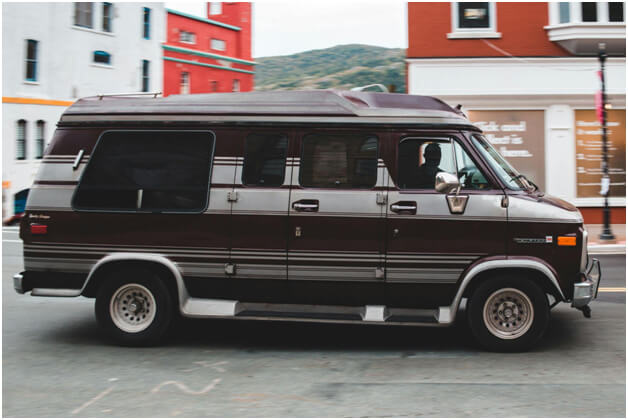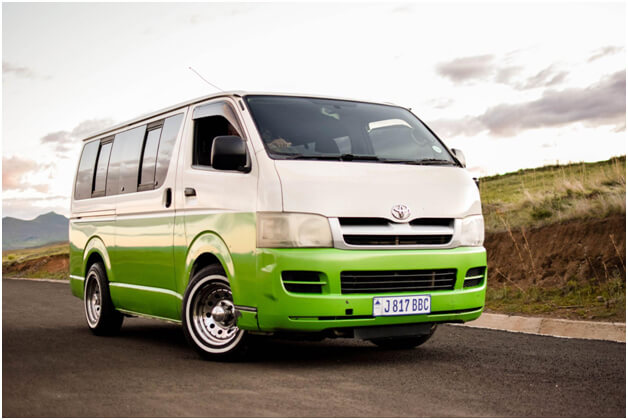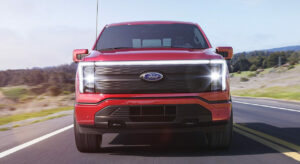Before visiting a dealer, collaborate with an occupational therapy (OT) specialist or durable medical supplier to organize your choices and prioritize them.
Factors to be considered include diagnosis, lifestyle habits, and property terrain as well as variations in wheelchair wheels, shock absorbers, and comfort features that could impact overall utility and satisfaction.
Rear-Entry Vehicles
Selecting a wheelchair-accessible vehicle is a crucial decision that will have long-term effects on your quality of life. Depending on your individual needs, side-entry or rear-entry vehicles offer both advantages and disadvantages when purchased for sale.
Rear-entry conversions tend to be simpler, less expensive and require almost no additional maintenance compared to front-entry vehicles. They also fit easily into any garage.
Suggestion: 9 Most Affordable V6 Twin Turbo Cars To Buy In 2024
Unfortunately, rear-entry vehicles cannot transport wheelchair passengers from the back seat since there is no space available for front passengers. Furthermore, rear-entry vehicles require that wheelchair users enter and exit from behind, preventing them from driving the vehicle themselves; instead, they must use a power transfer seat to gain access to the driver position.
Rear-entry vehicles also suffer from limited trunk space due to their wheelchair ramp occupying much of its back compartment, as well as difficulty parallel parking. As such, this style is typically employed in attended applications like taxis, non-emergency ambulances, and paratransit transportation as well as assisted living and dial-a-ride services.

Side-entry conversions provide a superior ride experience for wheelchair passengers and their drivers due to ample space to manoeuvre. Furthermore, side-entry wheelchair vans can even be driven using a power transfer seat by wheelchair-bound drivers themselves!
Some companies also provide a unique solution for wheelchair accessibility in the side-entry vehicles ramp system, with ramp storage underneath that vehicle that can be deployed at the touch of a button, giving families more flexibility in transporting both wheelchair occupants and ambulatory passengers at any one time. Professionals like the ones at Southern Mobility Vehicles can help you determine the best option for you. It is important to compare different vehicles before making your final decision.
Other popular mobility modifications for wheelchair users include restraint systems that keep wheelchairs secure during transit, power door openers for easier operation, and hand controls to assist those with limited lower body strength to operate the vehicle.
Hand controls may also come in handy; hand controls enable those without lower body strength to use a vehicle more safely. Furthermore, handicapped vehicle accessories include chair-topper rooftop carriers that securely stow and retrieve wheelchairs as well as roof racks to store luggage, equipment, or gear securely.
Side-Entry Vehicles
Once you have made major decisions that will define which wheelchair-accessible vehicle best meets your needs, it is time to narrow your focus further and consider all its details. Your seating preferences and additional accommodations — like power transfer seats or hand controls — can have a dramatic impact on how your vehicle functions.
Your next decision should be whether to purchase a side-entry or rear-entry vehicle. Side-entry vehicles tend to offer greater floorplan flexibility; wheelchair users can access and even drive from their chairs. This provides them with greater independence while traveling without needing an attendant or companion present.
Also Check: 13 Useful Tips To Save Money When Buying A Used Car
Side-entry wheelchair vans require parking in a designated handicapped or larger parking space to ensure that the ramp can deploy without interfering with any other cars in a busy parking area and should take special caution when exiting it in traffic-heavy environments.

SUVs
Wheelchair-accessible SUVs are becoming more prevalent in the mobility industry and offer stylish yet modern alternatives to traditional vans. These vehicles feature a rear ramp which enables wheelchair passengers to enter and exit just like other passengers; if necessary, this ramp can even be lowered for easier access.
Once inside, wheelchair users may drive from their own chair in side-entry mode or ride in the front passenger seat as usual – making these an attractive alternative choice when long trips need luggage transporting and equipment carrying. Additionally, SUVs typically provide additional storage space than vans, so they make ideal vehicles when taking long trips that need luggage transporting or equipment transporting!
As with any vehicle purchase, the first step to purchasing a wheelchair-accessible vehicle should be identifying your specific needs. Making a list of must-have features can help narrow your choices and streamline the search. After this, focus on researching conversion types and lift options until you find something suitable to meet them in terms of both size and lifestyle considerations.
Minivans
Minivans are perhaps the most well-known vehicle type that is available as wheelchair accessible conversions. Popular choices for new or used wheelchair-accessible conversions include Honda Odyssey, Dodge Grand Caravan and Chrysler Town and Country models.
They all boast three rows of seating with giant sliding doors for access, and six-cylinder engines and can easily accommodate large wheelchairs thanks to a lower floor compared to other types of wheelchair-accessible vehicles. You can visit this site for helpful tips on DIY modifications.
Many dealerships provide wheelchair-accessible demo vehicles you can test drive directly in person, giving you a good feel for the size and driving dynamics of wheelchair-accessible cars. Bring along caregivers who have experience transporting individuals in wheelchairs if this helps make decisions easier for you.
Although it may be tempting to purchase an inexpensive wheelchair-accessible vehicle, modifications can quickly escalate and increase in cost over time. By investing in a quality vehicle with enhanced mobility options that also have greater resale value you will secure long-term value as an asset for yourself or future buyers.
As a first-time buyer, you should prepare yourself for the complexities of this process. Doing your research on wheelchair-accessible vehicle conversion types and lift options is critical to your success, creating a list of “must-have” features will allow you to narrow the field and start exploring your options – when entering a dealership with such an organized plan in hand you will feel more confident trusting your instincts than trying blindly to guess at their options.






